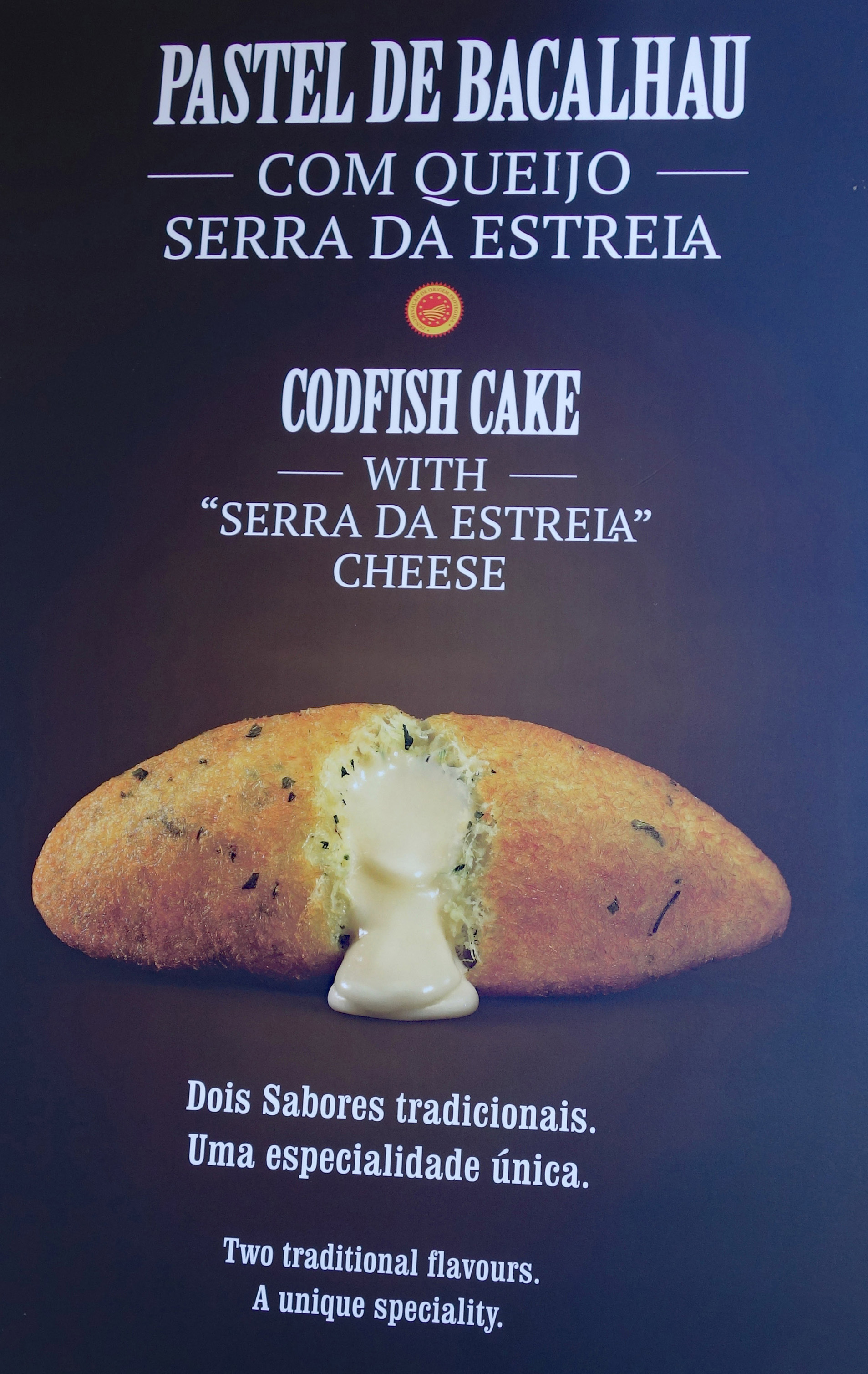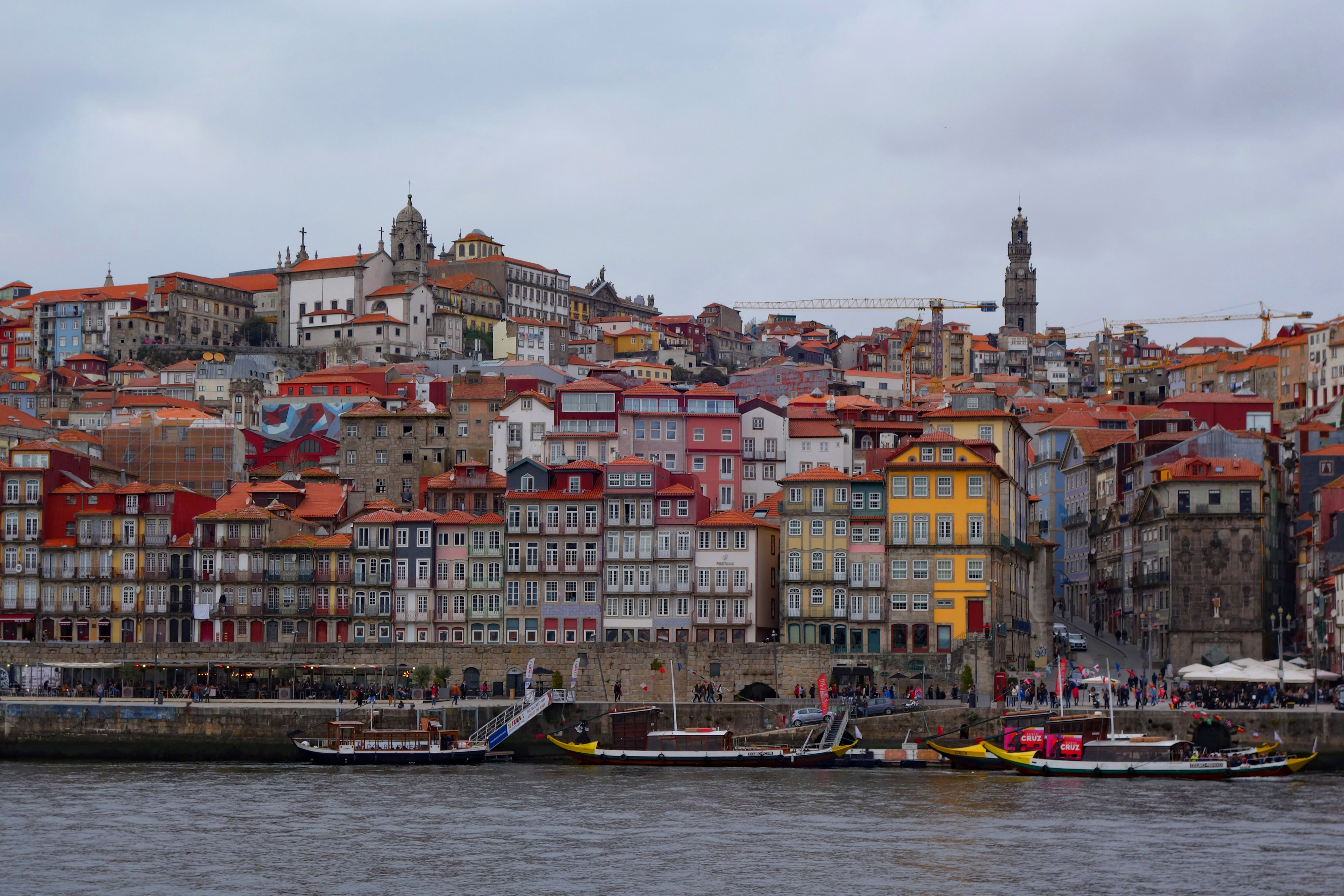
Oporto, as many call this city, was our third and final stop in Portugal, a country we have enjoyed visiting and come to love. Our continued journey north took us from Lisbon along the western coast of Portugal arriving in Porto mid day. We unloaded the car, set out for the grocery store and once settled into the apartment we took a short walk down to the riverfront. Our latest apartment is set high on the hillside where the Duoro river meets the Atlantic ocean. The views are spectacular with huge waves crashing onshore and over the breakwaters in the distance. It is this view we spent many hours enjoying over the course of our time here.

The apartment comes with 2 bicycles allowing us to get into the city center easily, and in under 15 minutes. The only tough part is coming back, we must ride up a steep hill to get home. Our first ride into central Porto was on a Friday afternoon to the old Ribeira quarter waterfront, filled with locals and tourists alike enjoying a sunny afternoon at the many bars and restaurants. During our walk we saw signs for an international wine convention that was going on which would explain why everywhere was exceptionally busy, with hundreds of vendors and attendees from around the world here in Porto. The Ribeira district is the city’s most colorful and touristy quarter and strolling alongside the river you can see across to the Vila Nova de Gaia district which houses over 18 port lodges. Every famous port name we have heard of, and many more, could be seen on the buildings across the river. Touring a port lodge, where the wine ages for years, is a must for any port lover, but more on that later 🙂 Porto is also known for the 6 bridges spanning the Duoro river, the most famous being the Ponte Dona Maria Pia, designed by Gustav Eiffel, architect of the famous Paris landmark.

Heading West, away from Porto, we took an afternoon ride along the waterfront to the upscale district of Foz do Douro. It was a Saturday when we chose to do this and the boardwalks and beaches were busy with families enjoying a sunny day at the beach. The beaches are long and wide and the waves full of surfers on a nice weekend, plus there was a cruise ship in port which no doubt added to the people everywhere.
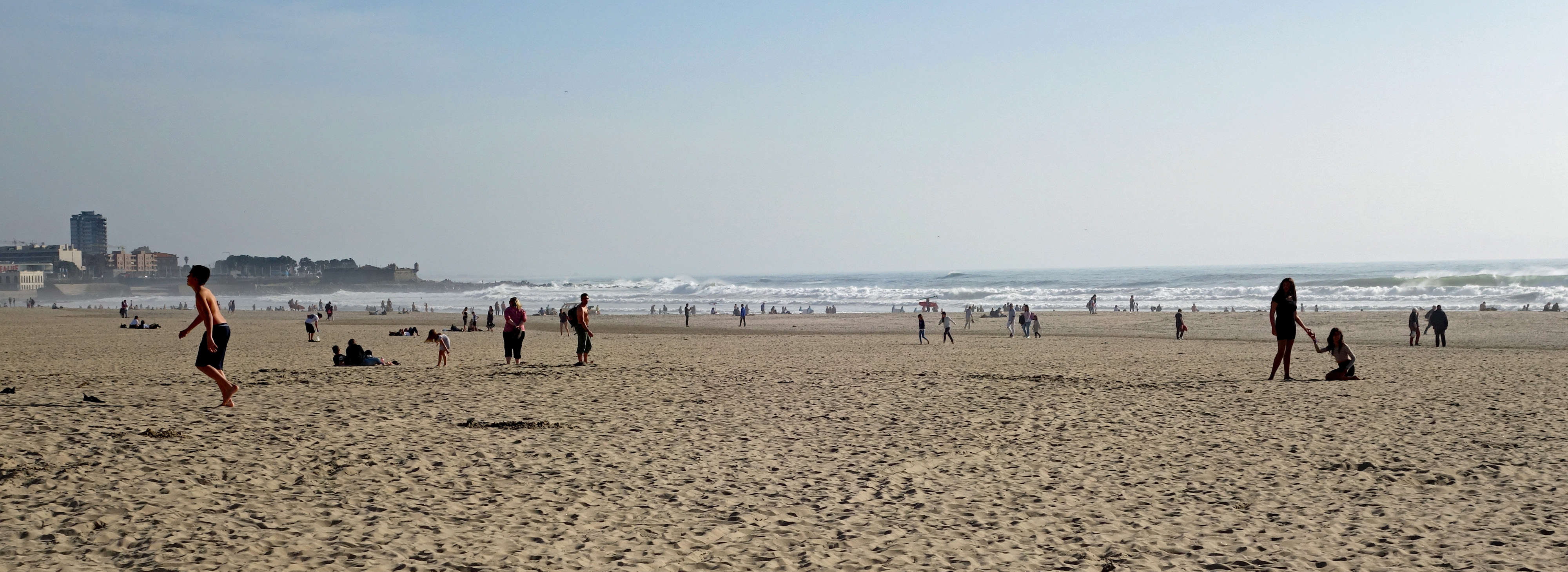
Early one Sunday morning, before the crowds, we rode the bikes into Porto, parked them and began a self guided walking tour, designed by Blair. The Palacio da Bolsa, where we began, is one of the most important historic monuments in Porto and the former Stock Exchange. It was built in the 1800’s in a neoclassical design and stands in the Infante D. Henrique Square above the Ribeira district. We could only admire the outside with the building closed to public access due to an International Wine Convention being held there.
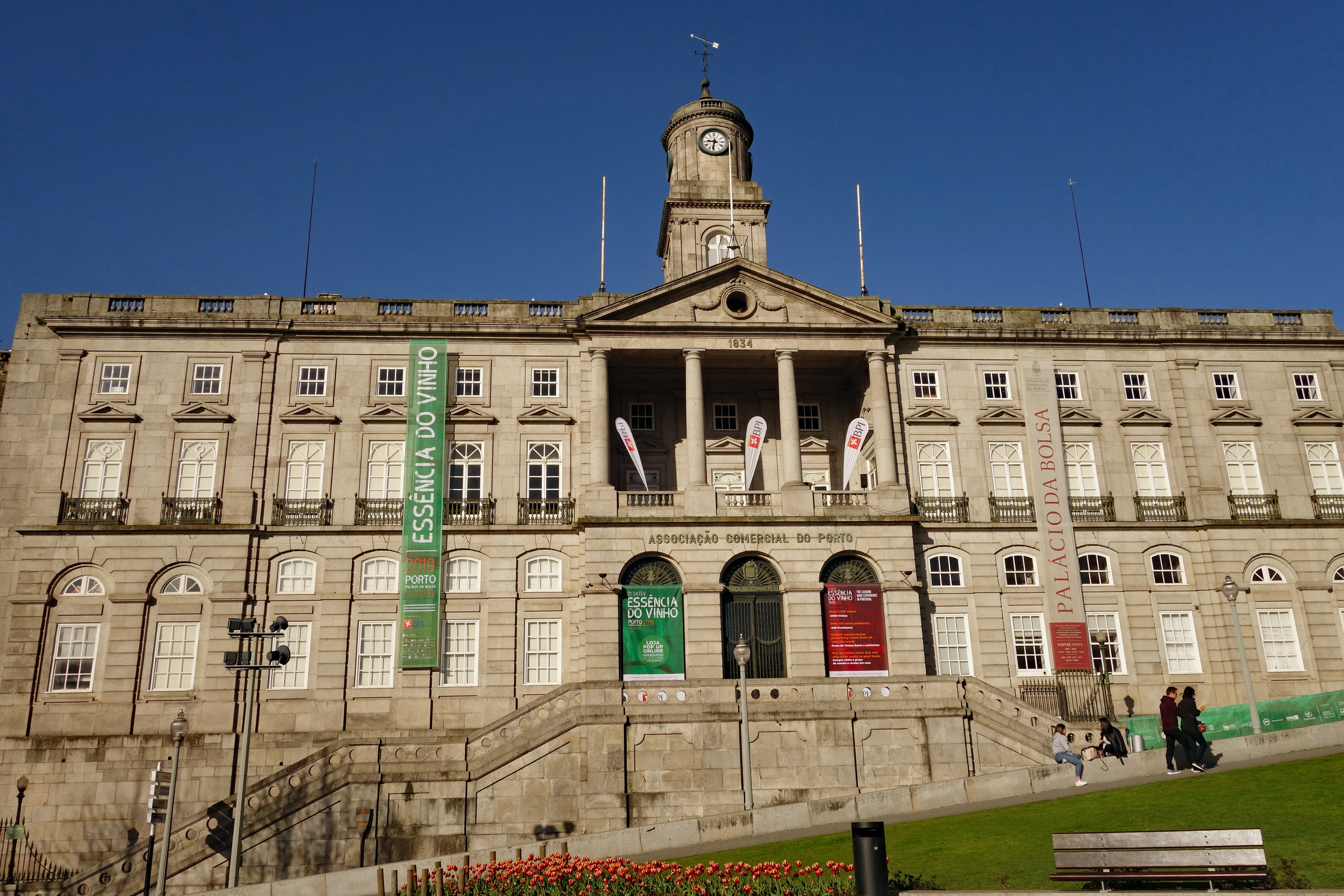
The Porto Cathedral, located on the highest point in the city, was our next stop. Apart from being the largest church, this cathedral is also among the oldest monuments in the city. It was built in the 12th century but has been rebuilt and renovated many times throughout the centuries resulting in a blend of Romanesque, Gothic and Baroque styles. It is renowned for Prince Henry the Navigator being baptized here.
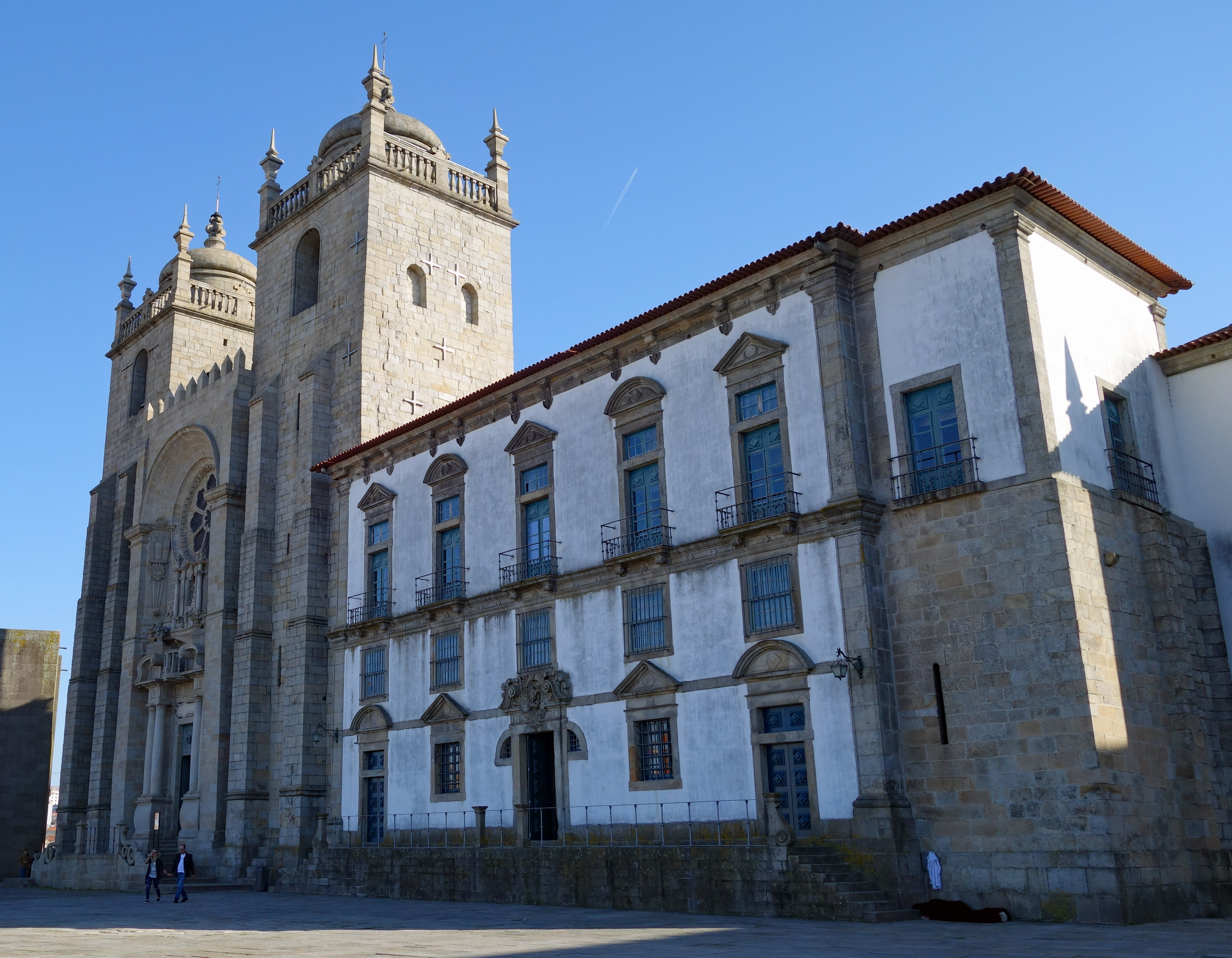
The Igreja do Carmo was built between 1756 and 1768 in late Baroque style. The exterior blue and white azulejo tile covered exterior, depicting history of the Carmelite order, was added in 1912 and was the attraction for us wanting to visit this church.
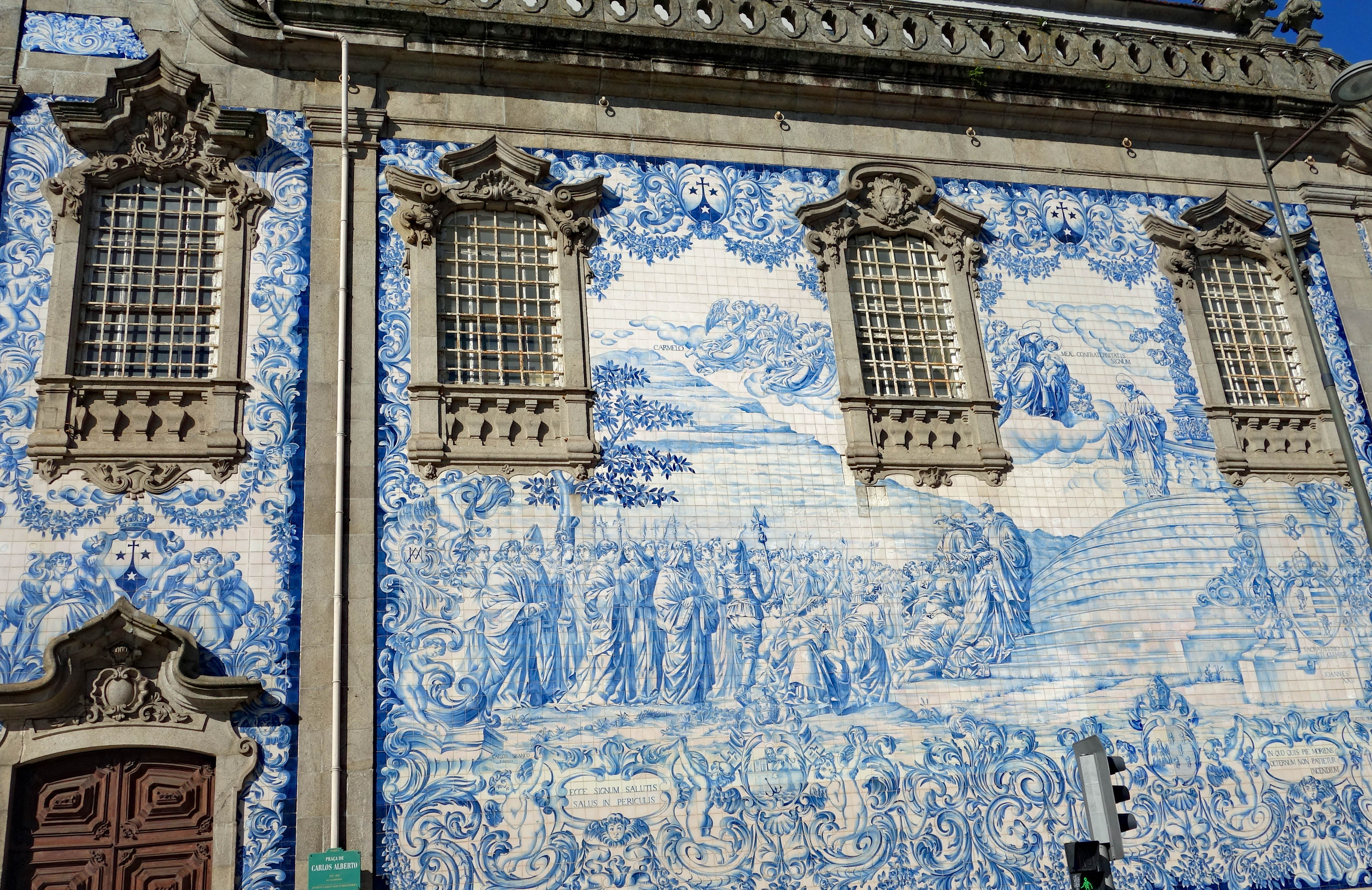
There is also a second church standing right beside this one, the Igreja dos Carmelitas church, which was built first. The two churches are separated by a 2 meter wide house that was inhabited until the 1980’s. The house was built so that the two churches would not share a common wall, which was not allowed, and to prevent interaction between the nuns of one church and the monks of the other church. You can see the “house” with the small door and two windows above between the two churches.
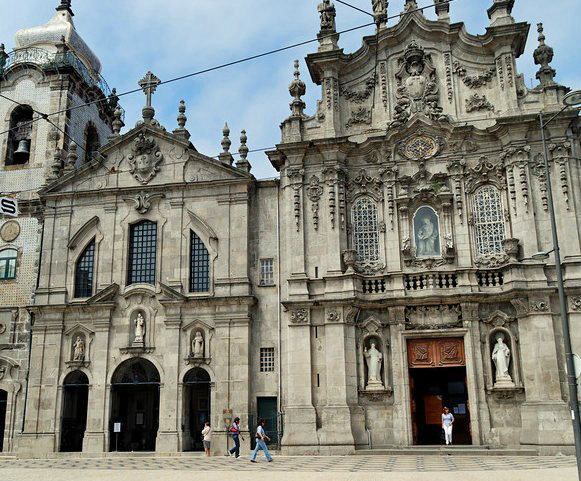
Avenida dos Aliados is Porto’s most grandiose boulevard, flanked by ornate buildings in a range of architectural styles, this avenue was built to impress. It is home to some of Porto’s most prestigious hotels and many banks. Standing at the head of the avenue is the stately town hall, famous for it’s 230 ft bell tower rising above the street.


Our final stop atop the hills of Porto was the Torre dos Clerigos, a baroque masterpiece dating from the mid 18th century inspired by Tuscan campaniles. The tower rises above all other buildings and is visible from everywhere in Porto.
Beside the tower we spied the Pastel de Bacalhau shop making and selling their codfish cakes, filled with Serra da Estrela cheese. Bacalhau is a traditional Portuguese appetizer that we were looking forward to trying. So, there we were standing outside enjoying our Bacalhau when a very aggressive seagull dove at Blair’s hand trying to steal his codfish cake, succeeding only in knocking it to the ground and hitting Blair in the face with his wings ☹ That was a bit too much excitement over the codfish cake, and Yes, I shared mine with Blair after that.
Just 100 km Northeast of Porto is the Peneda-Geres National Park where we spent an enjoyable day visiting a few sites around the park. We toured the Ponte do Diabo-Misarela, built in the middle ages and just a 1km walk from the village of Sidros.
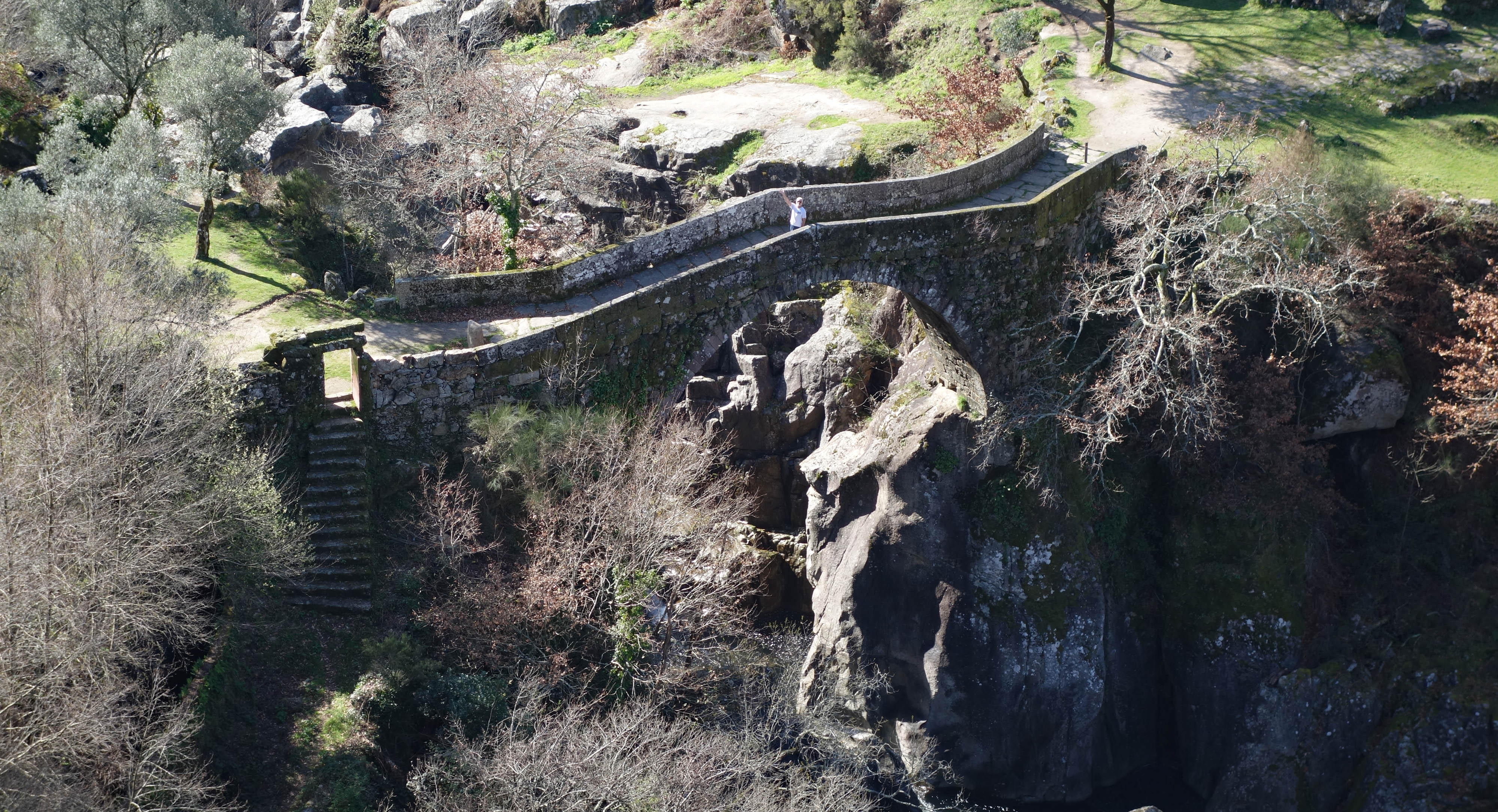
The Pincaes waterfall is a pretty 1km walk from the village. We were guided by two local dogs all the way to the small waterfall and and back to the village after our visit. It was a nice hike through the forest despite the waterfall being underwhelming 🙂 Our next stop was the Arado waterfall which was a steep hike up a series of steps in the hillside, which put you above the waterfall, or a more interesting trek through the riverbed jumping from rock to rock, which Blair did to get this photograph.
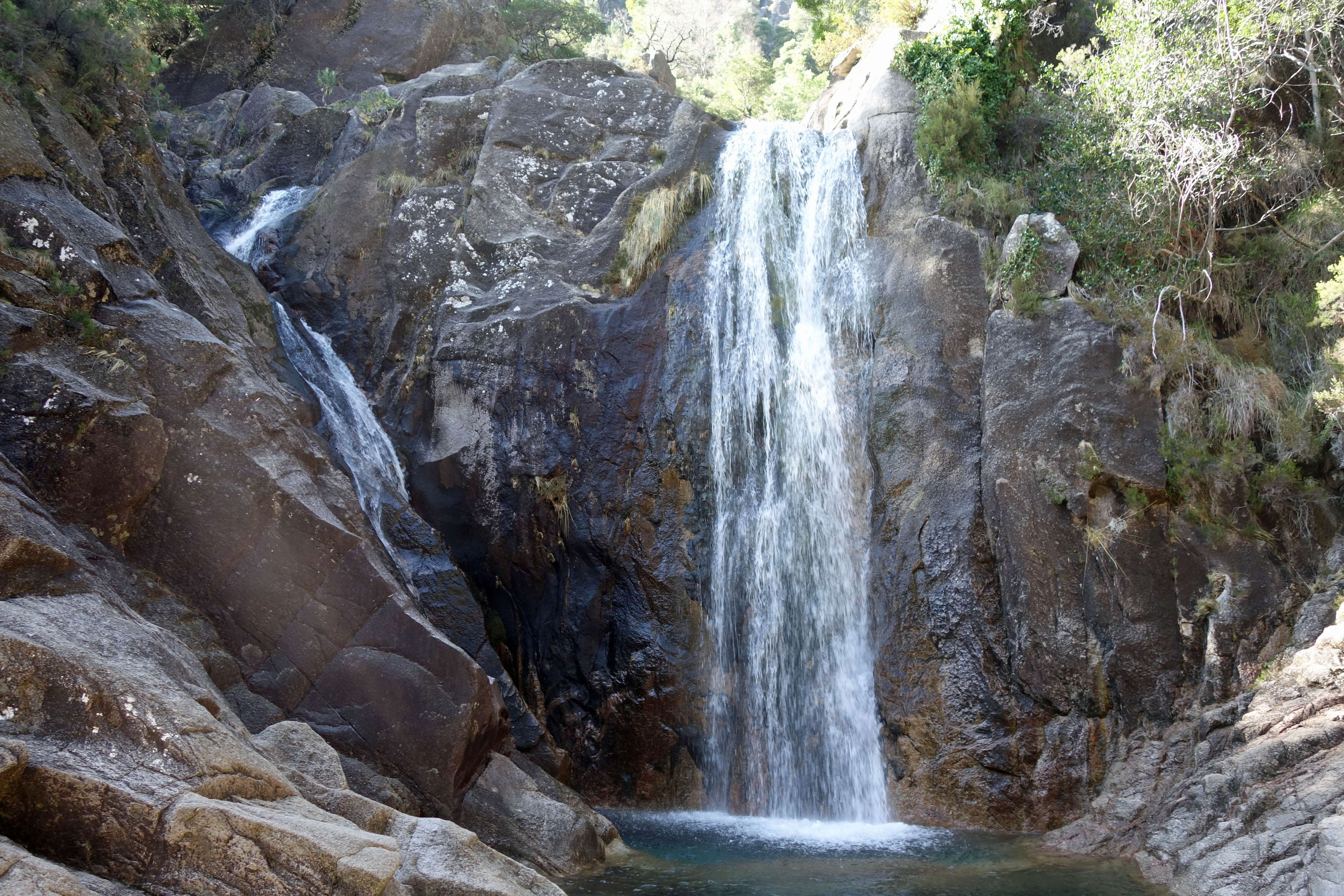
The Miradouro da Pedra Bela viewpoint was quite honestly the the most beautiful place to admire the National Park, with a breathtaking panorama of the valley and mountains. In only one day, we have barely scratched the surface of what there is to see in this park, what a wonderful place to escape the city.

On our way back to Porto we stopped just outside the town of Braga to see the Bom Jesus do Monte Sanctuary, built in the 18th century. There is a 17 level Baroque stairway, known as as the Sacred Way, climbing 116 meters up to the church. This amazing dual stairway, zigzagging up the hill, was the reason I wanted to visit. On every landing there are grottos, fountains, statues and friezes, and the views from the top are well worth the climb. The sanctuary is within a large beautiful park with a funicular running to the top if you choose to skip walking up the staircase.
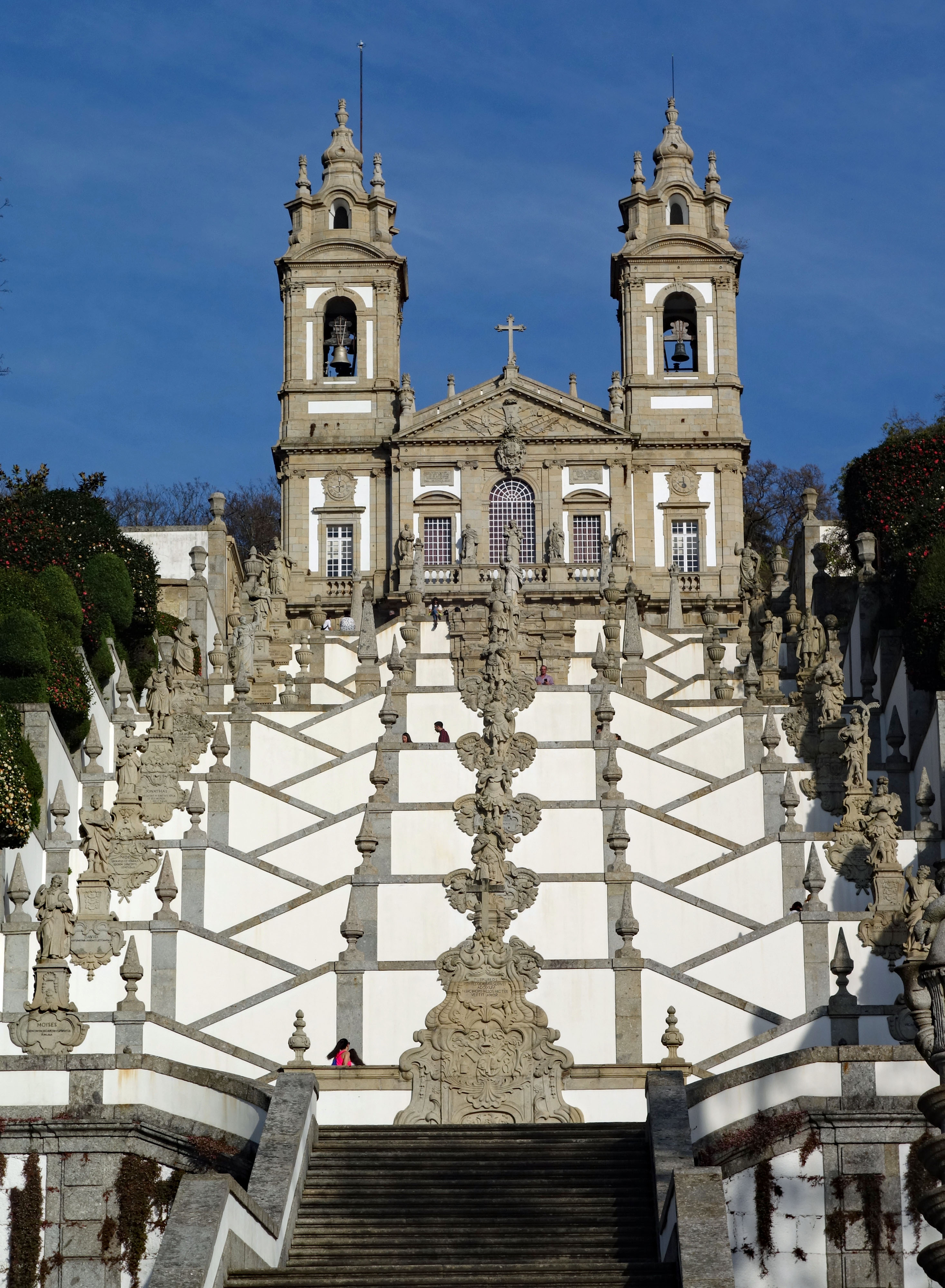
A short drive south of Porto is the town of Aveiro, nicknamed the “Venice of Portugal” thanks to it’s small network of picturesque canals filled with brightly colored boats. Aveiro is close to the coast so before heading into the town we visited Costa Nova. Costa Nova is squashed onto a tiny strip of land between the beach and a lagoon, reminding us a little of Sanibel Island in Florida. Costa Nova is known for it’s lovely striped fisherman cottages which are quaint and colorful. We were impressed with the large sand dunes behind the cottages and the roar of the Atlantic waves beyond the dunes.
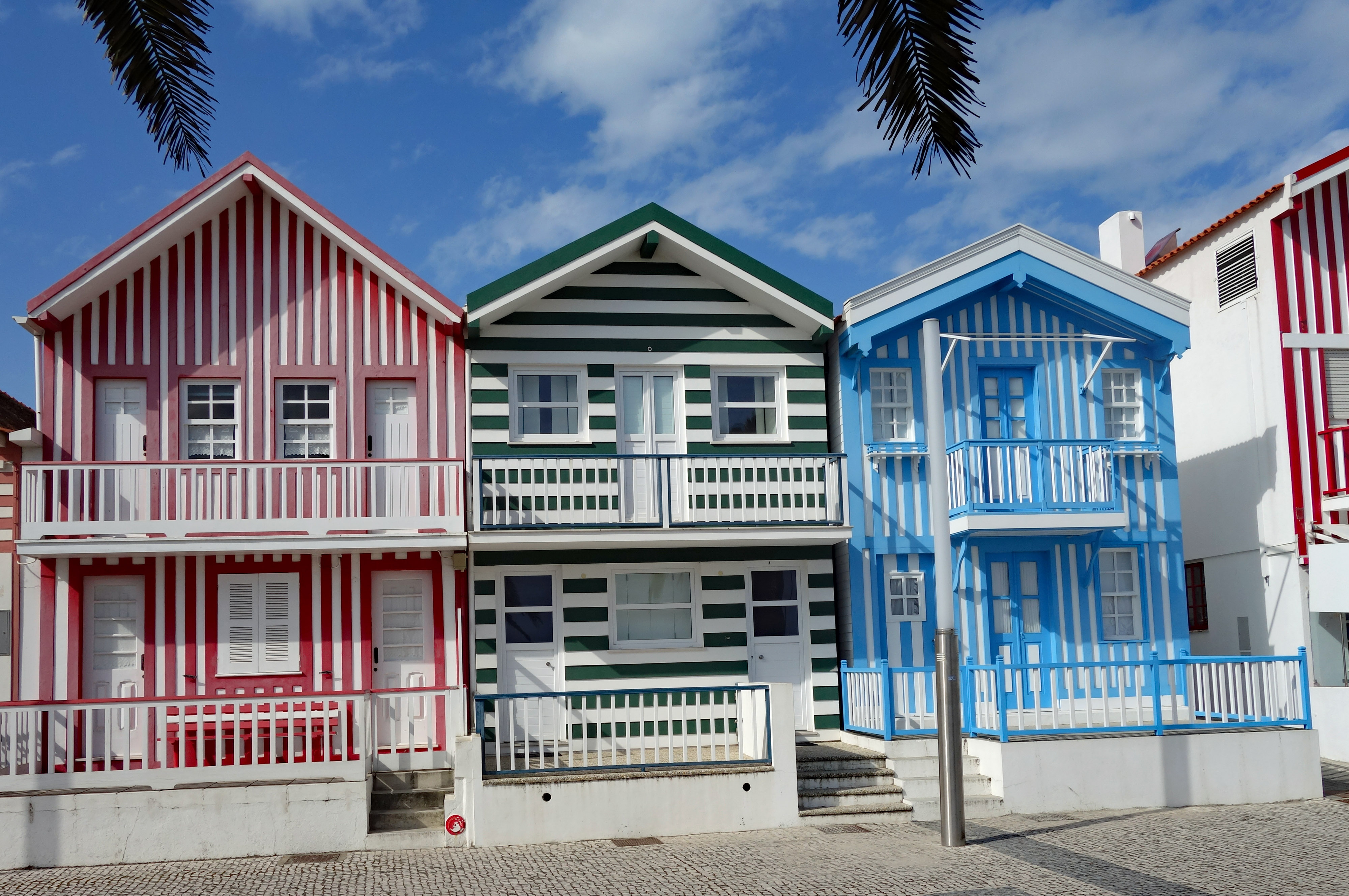
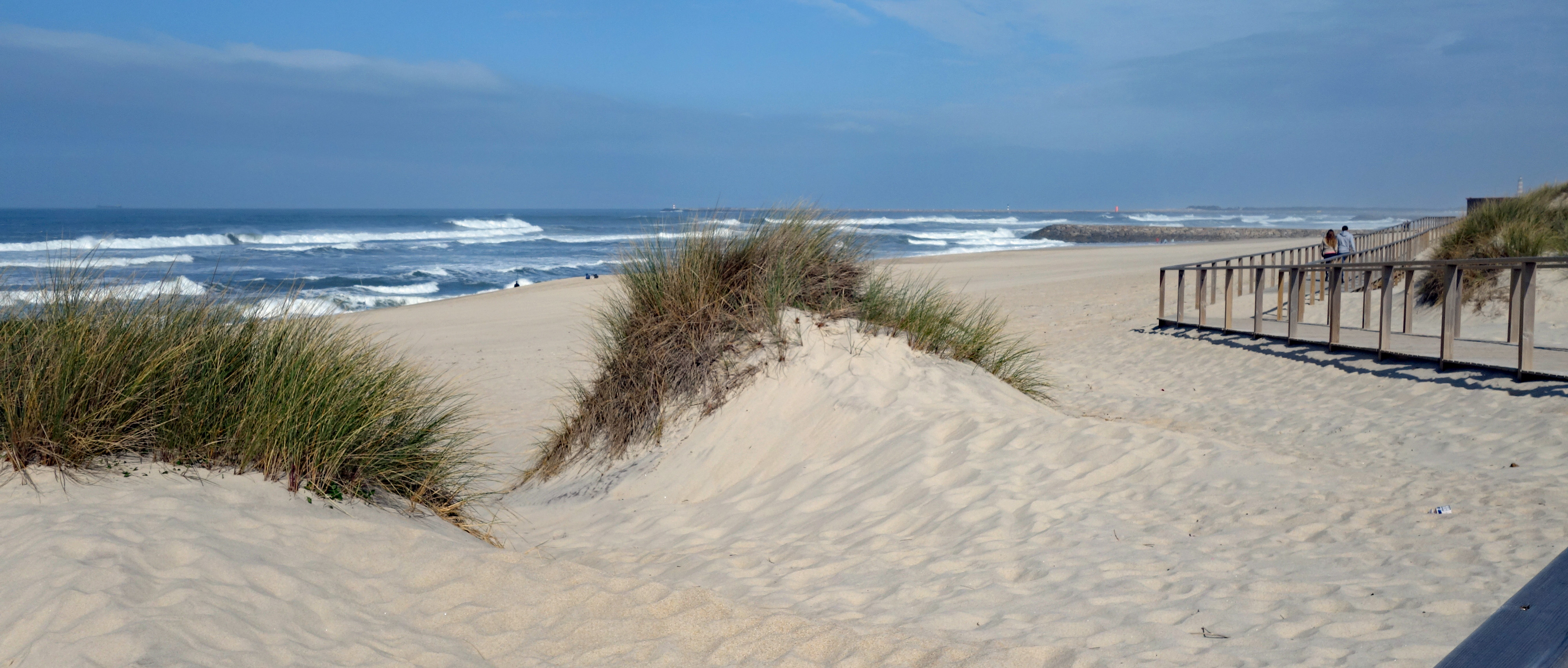
After Costa Nova we headed inland to the center of Aveiro. For late February the canals were reasonably busy with the colorful moliceiros, boats traditionally used for seaweed harvesting but now used for canal cruises. These boats are much larger than the gondolas in Venice and are motor driven, so not quite as charming as a Venetian gondola ride.
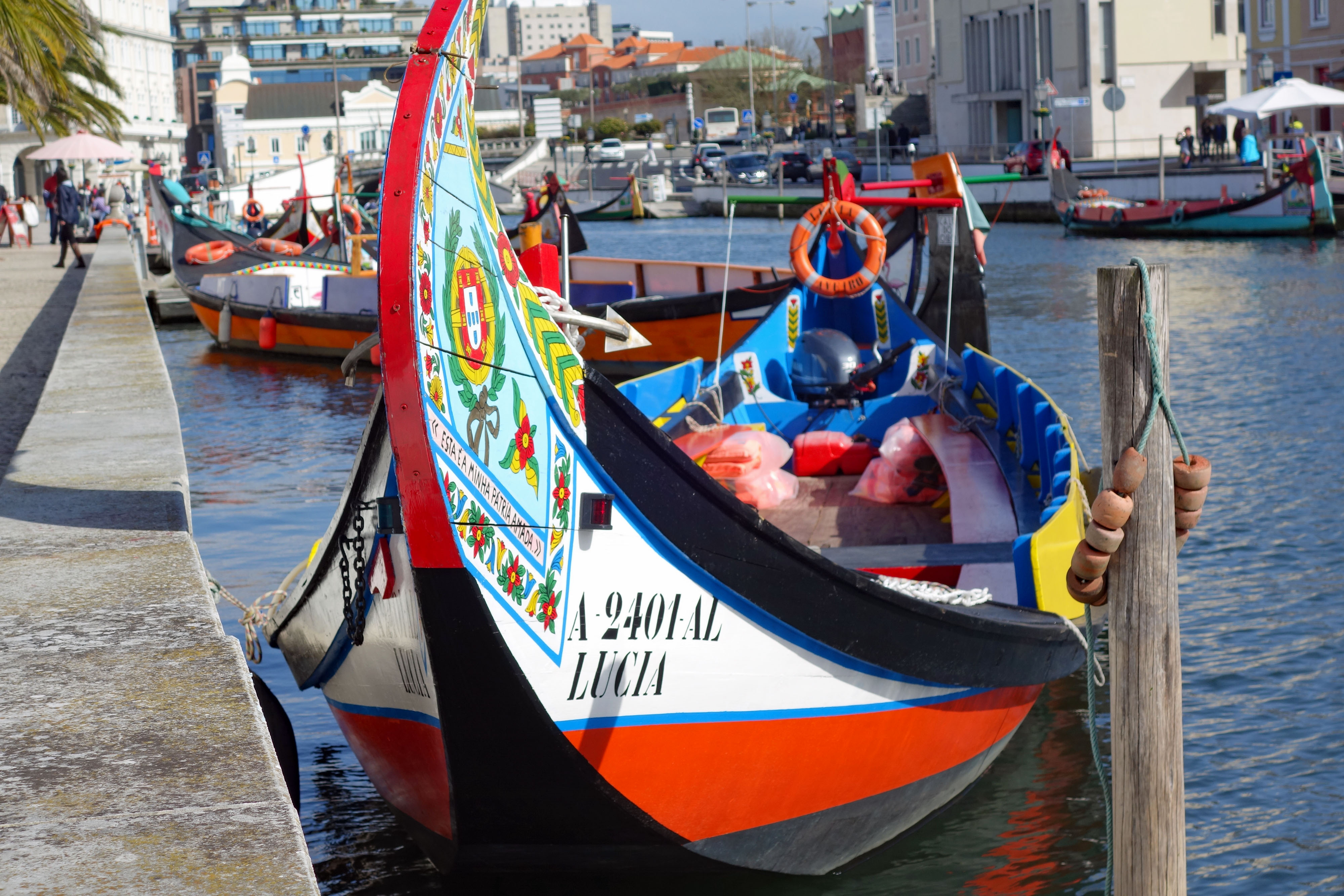
Along the main canal is a series of buildings with facades inspired by the Art Nouveau period. Sadly the most beautiful building, the Art Nouveau Museum, was covered in scaffolding and under repair, and so I have no photos of that particular building.
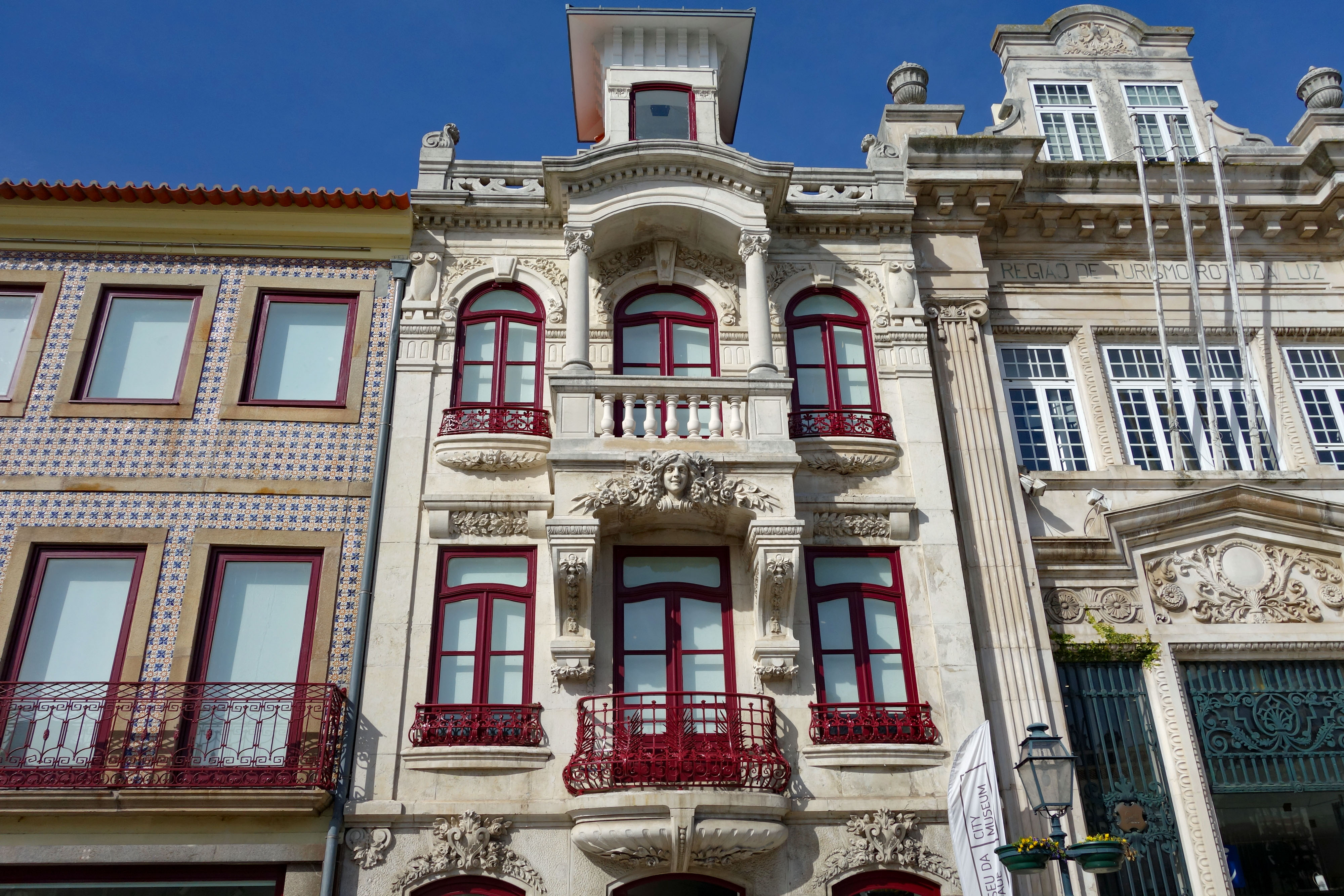
Aveiro has a large fish market with an abundance of seafood restaurants surrounding the area, go figure!! We chose Porta 36 for an amazing lunch of fresh fish – cod for me and swordfish for Blair. After lunch we made our way to Confeitaria Peixinho to purchase a couple of Ovos Moles…..what?? They are a local sweet native to Aveiro made with sugar and eggs encased in a hard wafer shell, and not as sweet as one would expect ( I still prefer the custard tarts in Lisbon). We also popped in next door at a canned fish store and found possibly the most expensive tin of sardines in the world. A gold brick shaped tin with de-boned, skinless sardines which takes 3 hours to make and has edible flakes of gold inside!! And the price for this tin of sardines?? 22 Euros (25 USD)…WOW!!
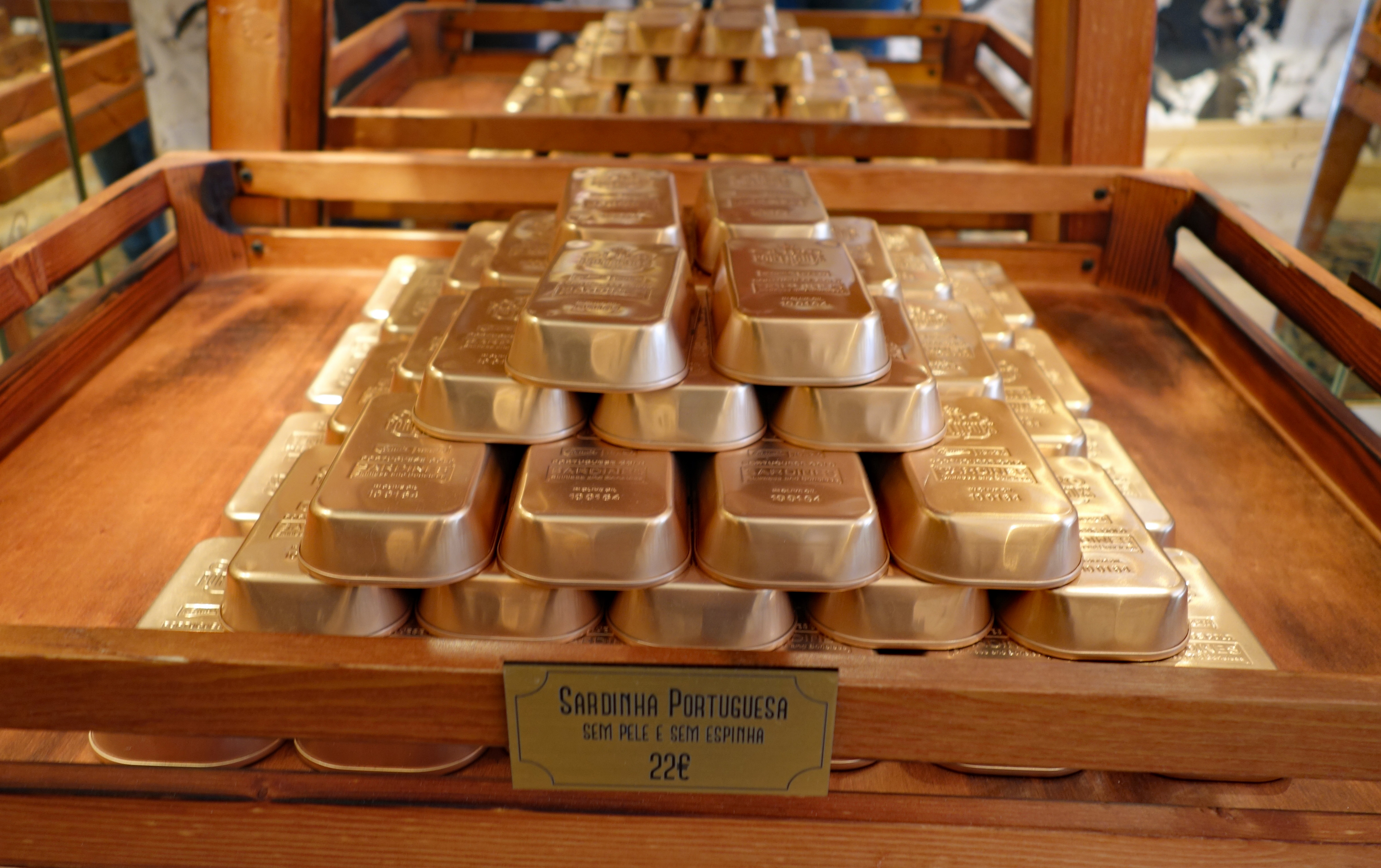
Across the river from downtown Porto, is the Vila Nova de Gaia district, where the port lodges are located. This is where the port wine is aged for many years after arriving from the vineyards, where the young wine spent the winter following the harvest. Port wine receives it’s name from the city of Porto where is has been historically shipped. Our first stop was the Vinum restaurant at the Grahams Port Lodge for a lovely lunch overlooking the Duoro River, including a very young port wine for dessert. After lunch we headed down to the river where the majority of the port lodges are located. We stopped in at the Vasconcellos Lodge and while they were not open for tours we received a detailed explanation of their ports and that they do not export their product. You can only buy their ports on site and they have made their name on the exclusivity of their product, producing 40,000 bottles per year-compared to 2.6 million bottles per year for one of the big houses!! We did not begin our tasting experience there but instead walked up the hill to the Taylor Fladgate lodge where we tasted a 10 year and a 20 year old port, both lovely and noticeably different – we ended up buying a half bottle of the 20 year old 🙂 Next we visited Sandeman’s, one of the largest port houses, for a guided tour and tasting. The cost of their 1790 tour was 22 Euros each (25 USD) and takes just over one hour. The tour was very interesting and informative, walking through their 200 year old cellars housing hundreds of oak casks and vats, finishing with a tasting of 5 different ports. Having done tours at various wine and scotch producers during the past year, we find it interesting the connections between them all. The port lodges sell their used barrels to the Scottish whisky distillers, which we learned while in Scotland last summer. It makes the tours just a little more relevant for us knowing additional details not usually mentioned.


While wandering the narrow and hilly streets of Vila Nova de Gaia we came upon another creation from the street artist we discovered in Lisbon, Bordalo II. I had seen the rabbit in an article written about him but was not sure what city it was in, and was pleasantly surprised when we spied in in Porto.
An afternoon of port tasting seemed like a fitting end to our time here in Porto. This city has a lot to offer from historic buildings, to port lodges and nearby beaches, charming little towns and a stunning national park nearby. A person could spend a lot more than 10 days here enjoying the surrounding countryside as well as the city.
Speaking of the surrounding countryside, almost 2 hours east of Porto is the Duoro Valley, a UNESCO world heritage landscape. This region has a microclimate that is optimal for the cultivation of grapes important for making port wine and is known for it’s picturesque quintas (estates) clinging to the almost vertical slopes dropping down to the river. It was a long journey to make in one day to and from Porto so we made a detour there during our moving day from Porto to Salamanca. Wow, what an amazingly beautiful valley, even in March,with steep terraced hillsides along the river valley and spilling into the surrounding valleys. Blair commented it would be unbelievable to see in August when the vines are overflowing with grapes. We stopped in at the Sandeman estate for a brief look around and one last port tasting, this time we tried a 20 year old and a 30 year old port…velvety smooth and delicious. We may have to consider enjoying a small glass of port more often 🙂

We have enjoyed our time spent in and around Porto tremendously and overall have loved our travels through all of Portugal, we are sad to be leaving however Schengen time limits are looming and we must keep moving. Next up, Salamanca, Spain…..
Trip Tips
Sandeman is a popular lodge to visit so we booked our tour via email on their website. Despite it being slow season here the tours in English were full so a walk-in tour was not possible.
The only way to experience the Peneda-Geres National Park is to hire a car and drive the narrow winding roads through the park, it is spectacular scenery.
